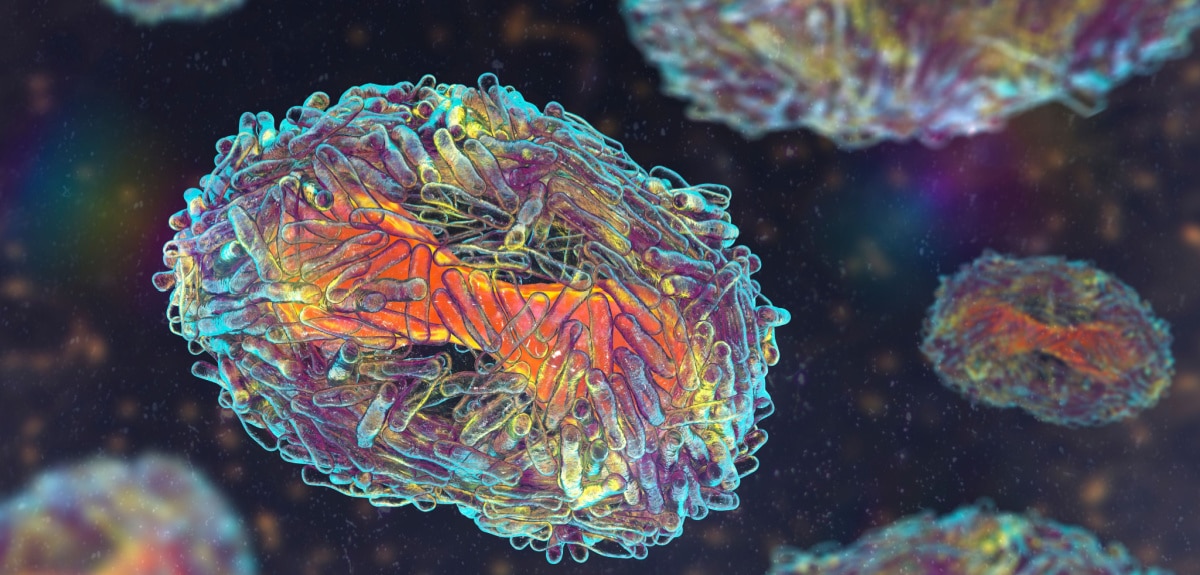Oxford contributes to new UK research consortium to tackle monkeypox
Tuesday 25th Oct 2022, 3.26pm

The consortium will be led by the Pirbright Institute and the MRC-University of Glasgow Centre for Virus Research, but researchers from across University of Oxford will play a key role.
Professor Miles Carroll’s group, based at the Pandemic Sciences Institute and the Wellcome Centre for Human Genetics, will be working with consortium colleagues on the development of a lateral flow device (LFD) for the rapid point of care diagnosis of MPXV. As MPXV infection can be confused with other common diseases, a reliable rapid diagnostic device would greatly benefit the public health response.
Professor Tao Dong’s group will lead in the understanding of T cell responses to the virus. T cells are an integral part of the immune response to viral infections and required for clearance of the virus, as well as providing long-lasting protection through the generation of memory cells. Prof Dong and her team, based at both the CAMS-Oxford Institute at the Nuffield Department of Medicine and MRC Human Immunology Unit at the MRC WIMM, will work to understand the cross-reactivity of existing T cells elicited in response to the smallpox vaccine against monkeypox infection, as well as characterising the T cell responses elicited by monkeypox infection.
Bringing together 25 leading researchers and scientists from 12 institutions across the UK, the consortium has received £2 million from the Biotechnology and Biosciences Research Council (BBSRC) and the Medical Research Council (MRC), both part of UK Research and Innovation (UKRI).
Human monkeypox infection was first identified in 1970 in the Democratic Republic of the Congo. Since then, there have been numerous outbreaks within Africa where it is endemic. In May 2022, multiple cases of monkeypox were identified in several non-endemic countries. Since May, in the UK, there have been more than 3,400 confirmed cases and internationally the WHO reports that it has now spread to 50 countries and territories.
Monkeypox virus (MPXV) is transmitted from one person to another by close contact with lesions, body fluids, respiratory droplets, and contaminated materials such as bedding. A member of the Orthopoxvirus genus in the family Poxviridae, monkeypox is closely related to the eradicated smallpox virus. While evidence suggests that smallpox vaccination can offer protection against monkeypox, the level of this cross-reactivity is currently unclear.
Read more about the consortium here.
In addition to the consortium, the CAMS-Oxford Institute has recently funded a project led by Dr Philip Drennan (NDORMS) to investigate immune responses against monkeypox following vaccination with the Modified Vaccinia Ankara (MVA) vaccine, previously developed for the prevention of Smallpox. Together with colleagues at UK Health Security Agency, Professor Helen McShane, Dr James Fullerton and other investigators in Oxford, the team will investigate both innate and adaptive immune responses to the vaccine, taking samples at various timepoints to establish how both acute and longitudinal responses respond to monkeypox virus, as well as determining the length of protection conferred by the vaccine.
Investigations into immune responses to monkeypox will be critical to ensuring that we are able to control infection rates, avoiding a pandemic as was caused by COVID-19. The knowledge gathered here will also be invaluable in the fight against future threats.

